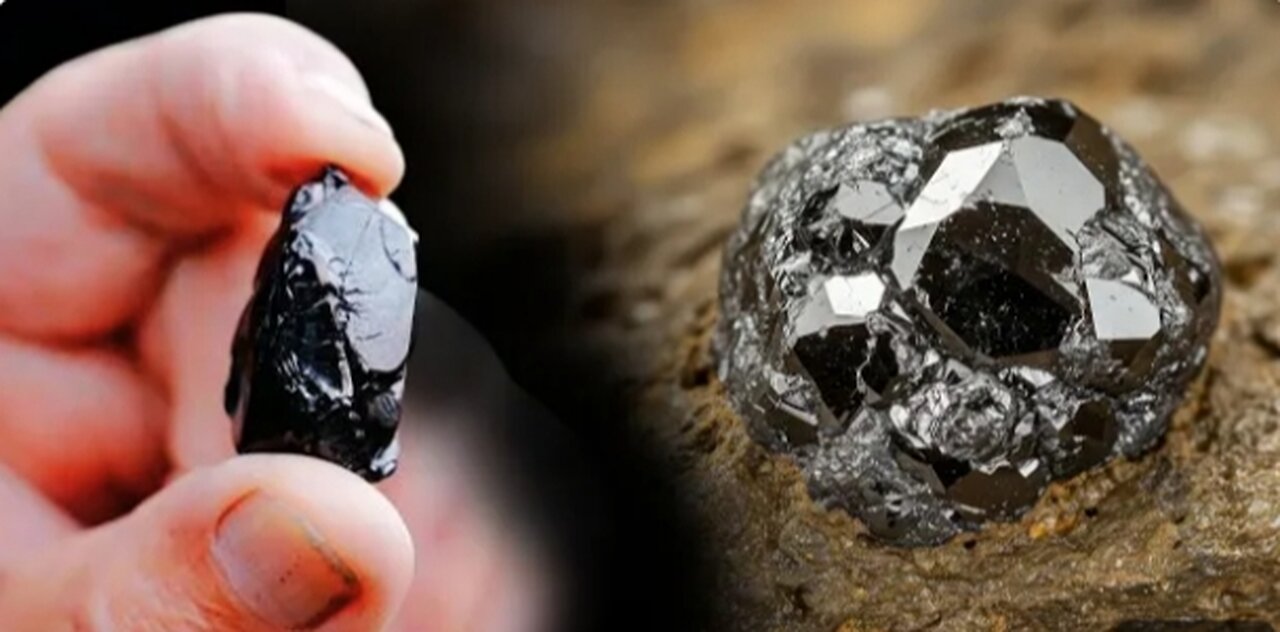Premium Only Content

How To Find Raw Diamonds Following Indicator Minerals
How to Find Raw Diamonds Following Indicator Minerals: A Detailed Guide
Finding raw diamonds in nature can be an arduous and expensive process, but one of the most effective ways to increase your chances of discovery is by following indicator minerals. These are specific minerals found in kimberlite pipes, which are the primary source of diamonds. By understanding these indicators and knowing where to look for them, you can potentially find diamond-rich areas. Here's a detailed guide on how to locate raw diamonds by following indicator minerals.
1. Understanding Kimberlite Pipes
Kimberlite pipes are volcanic conduits that bring up deep-earth materials, including diamonds, to the surface. Diamonds form under high pressure and temperature conditions deep within the Earth and are brought to the surface by kimberlite eruptions. These pipes are the most common source of diamonds.
2. Indicator Minerals: What Are They?
Indicator minerals are minerals that commonly accompany diamonds in kimberlite pipes. While diamonds themselves are rare and difficult to find directly, the presence of these indicator minerals can signal that you are in an area where diamonds are likely to be found. Some of the most common indicator minerals include:
Garnet (especially eclogitic garnet)
Chromian spinel
Ilmenite
Pyrope
Diopside
Olivine
Chromite
These minerals are often found in the heavy mineral concentrates that are sifted and analyzed in the search for diamonds.
3. How to Identify Indicator Minerals
The first step in using indicator minerals is learning how to identify them. These minerals can be found in sediments such as gravel or sand, typically in riverbeds, beaches, or areas near kimberlite pipes. Here’s a brief guide to identifying key indicator minerals:
Garnet: Look for red to brownish-red stones that may be translucent. They are often found in irregular shapes.
Chromian Spinel: This is typically dark green to black and has a shiny, glass-like appearance.
Ilmenite: A black, metallic mineral that often has a reddish-brown streak.
Pyrope Garnet: A bright red garnet variety associated with diamond-bearing kimberlites.
Diopside: This green mineral often shows a glassy luster and may form in transparent crystals.
4. Finding Indicator Minerals
To find indicator minerals, you will need to search in areas that are known to be geologically favorable for kimberlite pipes. Here are a few tips:
Start in Known Diamond Areas: Areas with a history of diamond production are prime locations. Many kimberlite pipes have already been mapped, making it easier to target areas likely to contain diamonds.
Sifting and Panning: Once you have identified a promising location, use a pan or sluice box to sift through gravel and sediment. The heavier minerals, including indicator minerals, will settle to the bottom, allowing you to separate them from lighter materials.
Follow River Systems: Rivers can carry kimberlite-derived minerals from upstream to downstream, so by focusing on riverbeds and sediment, you may increase your chances of finding indicator minerals.
Look for Geological Features: Certain landforms, like volcanic rocks or ancient craters, may also indicate the presence of kimberlite pipes.
5. Analyzing Your Find
Once you’ve gathered a sample of potential indicator minerals, you’ll need to analyze them. You can use a basic field guide or a magnifying lens to identify minerals based on their color, shape, and texture. If you’re unsure about the identification, you can take your samples to a geologist or a gemologist for analysis.
6. Advanced Techniques: Geophysical Surveys
If you want to take your search to the next level, consider using advanced geological and geophysical techniques such as magnetometry, soil sampling, and even aerial surveys. These methods can help you pinpoint areas with the highest concentration of kimberlite pipes and associated minerals.
7. Where to Look for Indicator Minerals
Africa: Countries like South Africa, Botswana, and Namibia are rich in kimberlite pipes and diamonds.
Canada: The northern regions of Canada, particularly around the Northwest Territories, are famous for diamond mining.
Russia: The Siberian region of Russia is home to many kimberlite pipes and diamond mines.
Australia: Australia also has known kimberlite pipes, such as those around the Argyle Mine.
Conclusion
Finding raw diamonds is no easy task, but following the trail of indicator minerals is one of the most effective ways to increase your chances. By focusing on the right minerals and geological features, you can zero in on areas with the potential for diamond deposits. While this method doesn’t guarantee a diamond discovery, it significantly enhances your odds of success.
---
Hashtags:
#DiamondHunting #RawDiamonds #IndicatorMinerals #Kimberlite #Geology #Mining #DiamondProspecting #DiamondMining #MineralIdentification #Garnet #PyropeGarnet #ChromianSpinel #Olivine #Ilmenite #GeologyRocks #Gemstones #NatureExploration #DiamondProspector #TreasureHunt #GeologicalSurvey
-
 2:10:12
2:10:12
Side Scrollers Podcast
19 hours agoMAJOR Hasan Allegations + Arc Raiders Review CONTROVERSY + Craig TRENDS on X + More | Side Scrollers
120K20 -
 9:24
9:24
MattMorseTV
16 hours ago $11.80 earnedFetterman is actually DOING IT...
11.8K45 -
 49:23
49:23
Live From The Casita
9 hours ago $4.16 earnedLive Music Jam
11.8K4 -
 2:55:50
2:55:50
The Pascal Show
13 hours ago $1.18 earnedMASSIVE CHAOS?! Transportation Secretary Hold Presser On Air Travel & More
8.23K2 -
 1:06:35
1:06:35
TruthStream with Joe and Scott
1 day agoZero Limits Round Table with Joe Vitale, Lisa Schermerhorn and more of the cast!
12.7K1 -
 LIVE
LIVE
Lofi Girl
2 years agoSynthwave Radio 🌌 - beats to chill/game to
222 watching -
 7:40
7:40
Blabbering Collector
15 hours agoLEAKED: Draco Malfoy, Hooch, Neville Longbottom! | Harry Potter HBO Show Update, Wizarding News
18.2K2 -
 3:06:35
3:06:35
Badlands Media
18 hours agoDEFCON ZERQ Ep. 017: Tesla Tech, Ancient Power & The Fight for Human Consciousness
239K66 -
 3:11:56
3:11:56
TimcastIRL
10 hours agoDOJ Launches FULL INVESTIGATION Into TPUSA Antifa RIOT, Media Says Mostly Peaceful | Timcast IRL
268K111 -
 3:16:27
3:16:27
Barry Cunningham
14 hours agoBREAKING NEWS: SOLVING THE HOUSING CRISIS BY UNDERSTANDING VETERANS DAY! AND IT'S MOVIE NIGHT!
88K35